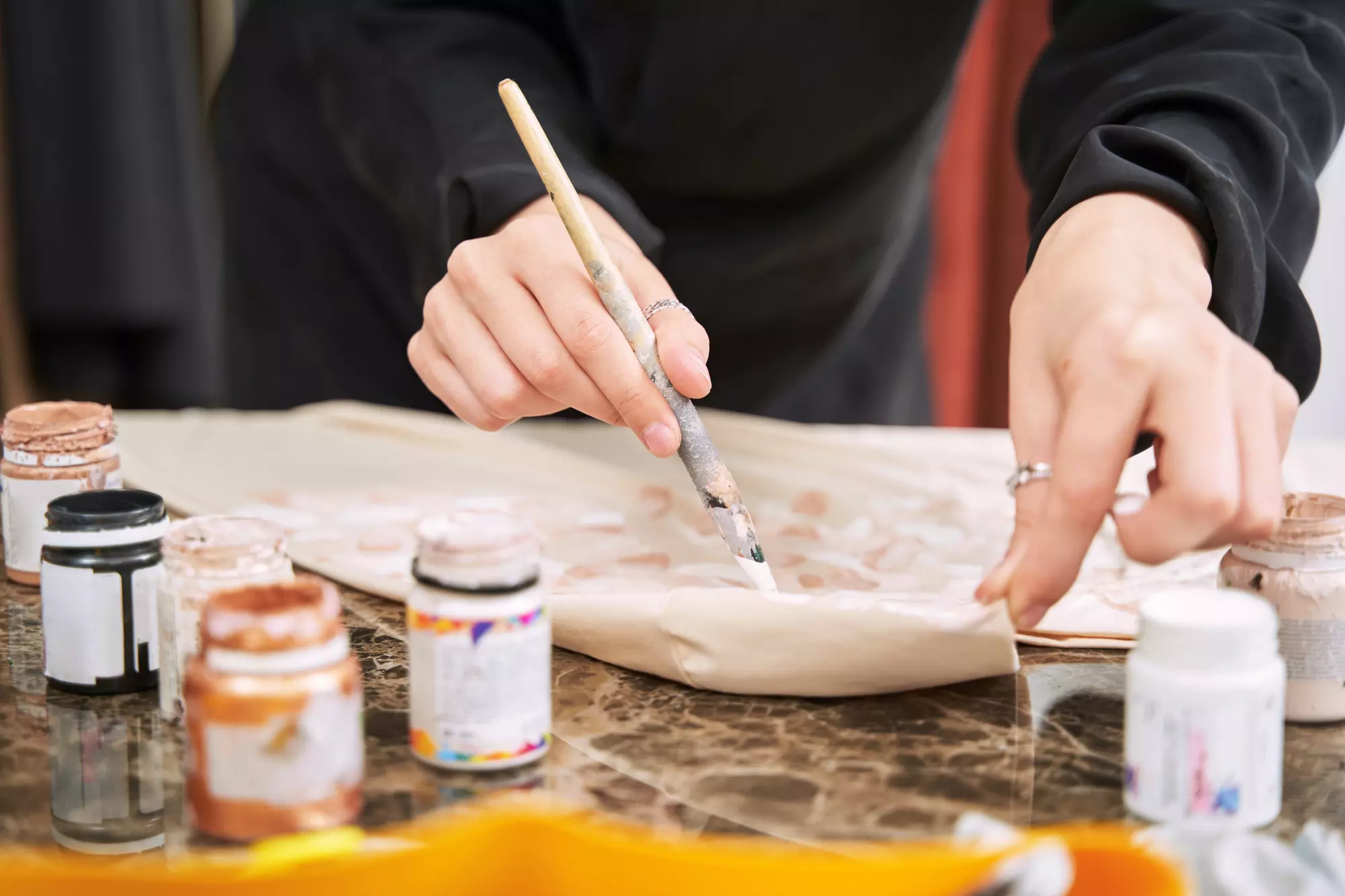Hand painting on fabric is a creative and fun activity. Which allows you to customize clothing, home decoration and other textile products with unique and original designs.
However, to achieve satisfactory results it is important to have the right tools and know what types of fabrics are best to paint on.
TOOLS FOR PAINTING ON FABRICS
Basic tools for painting on fabrics include brushes, sponges, rollers, and stencils. It is necessary to have acrylic paints for fabrics. Paints can be water-based or solvent-based, depending on the type of fabric and the desired effect.
It is important to note that some fabric paints require heat to set. Therefore, you must have an iron or a heat press to achieve adequate fixation.
TYPES OF FABRICS TO PAINT
The most recommended fabrics for painting are those that have an open weave, cotton fabric, wool and linen. These fabrics allow the paint to adhere better to the fibers and set properly.
Synthetic fiber fabrics such as polyester and nylon are more difficult to paint due to their smooth, non-porous surface. However, there are special paints for synthetic fabrics that can achieve satisfactory results.
It is important that the fabric is well pressed, fixed or taut; so that the brush can run without problem, since, if the fabric is wrinkled, the strokes will not remain correctly.
Tips for painting on fabric
Before you start painting on fabric, keep these important facts in mind.
- Wash the fabric to remove any residue or substance that may interfere with the adhesion of the paint.
- It is also important to iron the fabric to remove any wrinkles or folds that may make it difficult to apply the paint.
- Use a white base to paint on dark fabrics, as this will allow the colors to look more vibrant and sharp.
- It is important to work on a flat surface and protect it with paper or plastic to avoid stains or paint spills.
- Apply the paint in thin layers and let each layer dry before applying the next. This will allow the paint to set properly and prevent it from bleeding or fading over time.
Paint grape leaves on fabric
Painting grape leaves on fabric is a task that requires patience and skill to achieve a realistic effect. To begin, you can trace the grape leaves on the fabric with a pencil or stencil.
Thin layers of dark green paint can be applied to create the base of the leaves, to give depth and texture lighter and darker details are added.
Paint lilies on fabric
Painting lilies on fabric is a delicate task that requires attention to detail and a steady hand. You can trace the outlines of the lilies on the fabric with a pencil or stencil.
Then apply thin layers of white paint to create the base of the flowers. Details can be added with lighter and darker tones to create shadows and texture.
Paint small flowers on fabric
Painting small flowers on fabric can be a fun and creative task. You can trace the flowers on the fabric with a pencil or stencil. Then apply thin layers of paint in vibrant shades to create a cheerful and colorful effect. Details can be added with lighter and darker tones to give depth and texture.
Paint a snowman on fabric
Painting a snowman on fabric is a fun task that can be perfect for the Christmas season. Trace the outlines of the snowman on the fabric with a pencil or stencil.
Then apply thin layers of white paint to create the base of the body. Details such as buttons, scarf and hat can be added with darker tones to create contrast.
Paint a little angel on fabric
Painting a little angel on fabric can be a delicate and emotional task. Trace the outlines of the little angel on the fabric with a pencil or stencil. Then apply thin layers of white paint to create the base of the body.
Details such as wings and halo can be added with gold or silver tones to create a celestial effect.
Paint a catrina on fabric
Painting a catrina on fabric can be a challenging but exciting task. Trace the outlines of the catrina on the fabric with a pencil or stencil. Then apply thin layers of paint in vibrant shades to create a dramatic and mysterious effect.
Details such as floral embellishments and dress details can be added with darker tones to give depth and texture.
To achieve satisfactory results, it is important to have the right tools, know what types of fabrics are best for painting, and follow basic recommendations.
With a little practice and patience, anyone can become an expert at painting on fabrics and create stunning, long-lasting designs.
Ready to paint your fabrics or garments?
